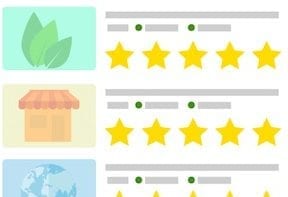An ecommerce site that is poor performing and hard to use can hurt its online sales.
An online store’s appearance, usability, and features should convey trustworthiness and professionalism. How an ecommerce site looks and behaves speaks to its safety and credibility. The moment your website stops making customers feel good about doing business with you is the moment it is hurting your business.
If your ecommerce site is experiencing any of the following seven signs, it may be time to replace it top to bottom.
1. Your Site Is Slow
Customers hate slow loading websites. It has always been this way. Two of the most often cited reports about how site load time impacts conversions come from 2009.
First, in June 2009 Google reported the results of an experiment wherein it slowed down its search page load times. The slower pages reduced the number of queries a person would run. Just a 400-millisecond difference resulted in 0.44 percent fewer searches.
Next, a 2009 study from Akamai stated that online shoppers expected a website to load within two seconds, and something like 40 percent of shoppers simply leave a website if it takes too long to load.
Customers have not become more patient in the past several years. In July 2016, Google released a report about building better mobile experiences.
Moreover, in a post on Think with Google, Daniel An and Pat Meenan wrote, “Mobile sites lag behind desktop sites in key engagement metrics such as average time on site, pages per visit, and bounce rate. For retailers, this can be especially costly since 30 percent of all online shopping purchases now happen on mobile phones. The average U.S. retail mobile site loaded in 6.9 seconds in July 2016, but, according to the most recent data, 40 percent of consumers will leave a page that takes longer than three seconds to load. And 79 percent of shoppers who are dissatisfied with site performance say they’re less likely to purchase from the same site again.
If your site is slow, it may be time for a new site or at least some site improvements.
2. Your Site Is Not Accessible
Website accessibility is an imperative. It is unacceptable to knowingly exclude blind and keyboard-handicapped shoppers. So if your site is not accessible, you’ll need a change. And if doing the proper thing is not enough of an incentive, you might get sued.
Since 2015, there have been many cases of online businesses being sued for not providing a website accessible to folks with disabilities. Here is what the U.S. Department of Justice had to say about it.
Today the Internet, most notably the sites on the web, plays a critical role in the daily personal, professional, and business life of most Americans. Increasingly, private entities of all types are providing goods and services to the public through websites that operate as places of public accommodation under title III of the ADA [Americans with Disabilities Act]. Many websites of public accommodations, however, render use by individuals with disabilities difficult or impossible due to barriers posed by websites designed without accessible features.
3. Your Site Is Hard to Maintain
If changing the home page banner or updating product information on your site requires a developer or is otherwise difficult, you may need a new website.
Ecommerce platforms have many functions, not the least of which is to manage content — whether that content is product information, an informational page, or a blog post. Your business should be able to make rapid changes.
4. Your Code Base Is Out of Date
It is the golden age of web development. Almost daily there are new capabilities, new APIs, new frameworks, or new libraries available. It can be hard to keep up. Unfortunately, being behind isn’t just a matter of missing out on features or performance. Out of date code is often vulnerable code.
Consider, as an example, a Northeastern University paper (PDF) called “Thou Shalt Not Depend on Me: Analysing the Use of Outdated JavaScript Libraries on the Web,” which was released in February 2017.
According to the paper’s authors, “web developers routinely rely on third-party JavaScript libraries such a jQuery to enhance the functionality of their sites. However, if not properly maintained, such dependencies can create attack vectors allowing a site to be compromised.”
What’s more, the researchers tested more than 130,000 websites and found that 37 percent — about 48,000 websites — were using at least one JavaScript library with a known vulnerability.
Ecommerce websites need regular maintenance to ensure safe code is used. If your site has an old code base, you could need a new site.
5. Your Site Is Hard to Navigate
Your online store should be easy to use. You need a functional search tool that returns relevant results in a flash. You probably need product categories that customers can use to “drill down” to the products they want. And you need layered and faceted navigation to help sort through your offerings.
Customers won’t always tell you when your site navigation is bad. They will just leave. If conversion rates or time on site stats are poor, it could be a navigation problem.

Good ecommerce site navigation, like what you find on the Beardbrand.com, should be easy to understand and easy to use.
6. Your Site Is Difficult to Extend
It should be easy to integrate your ecommerce platform with third-party services. Want to start using a great new order processing software suite? You should be able to tie into it via an application programming interface (API). If your site or platform can’t, you are at a competitive disadvantage.
Your website must be easy to extend and integrate. If it is not, you might need a new site.
7. You’ve Just Hit $1 Million in Sales
The ecommerce platform that got you your first $1 million in online sales may not be the best choice to get you to $10 million.
In the ecommerce vernacular, online shops with annual sales ranging from about $1 million to $25 million are considered “mid-market.” Mid-market online retailers often face significantly different challenges than do either smaller or larger online sellers. Thus it only makes sense that you might need a different ecommerce platform.
Look for a solution, which may be a combination of software tools, that helps you automate processes.
When your business had ten orders a day, as an example, it was simple to look out for fraud. When you have 1,000 orders per day, fraud prevention may need to be integrated into your site. Similarly, when you sold 100 products, you could do on-site merchandising and product recommendations by hand. But with 10,000 products, you’ll want automated personalization.
When your business grows, your site must evolve too.




